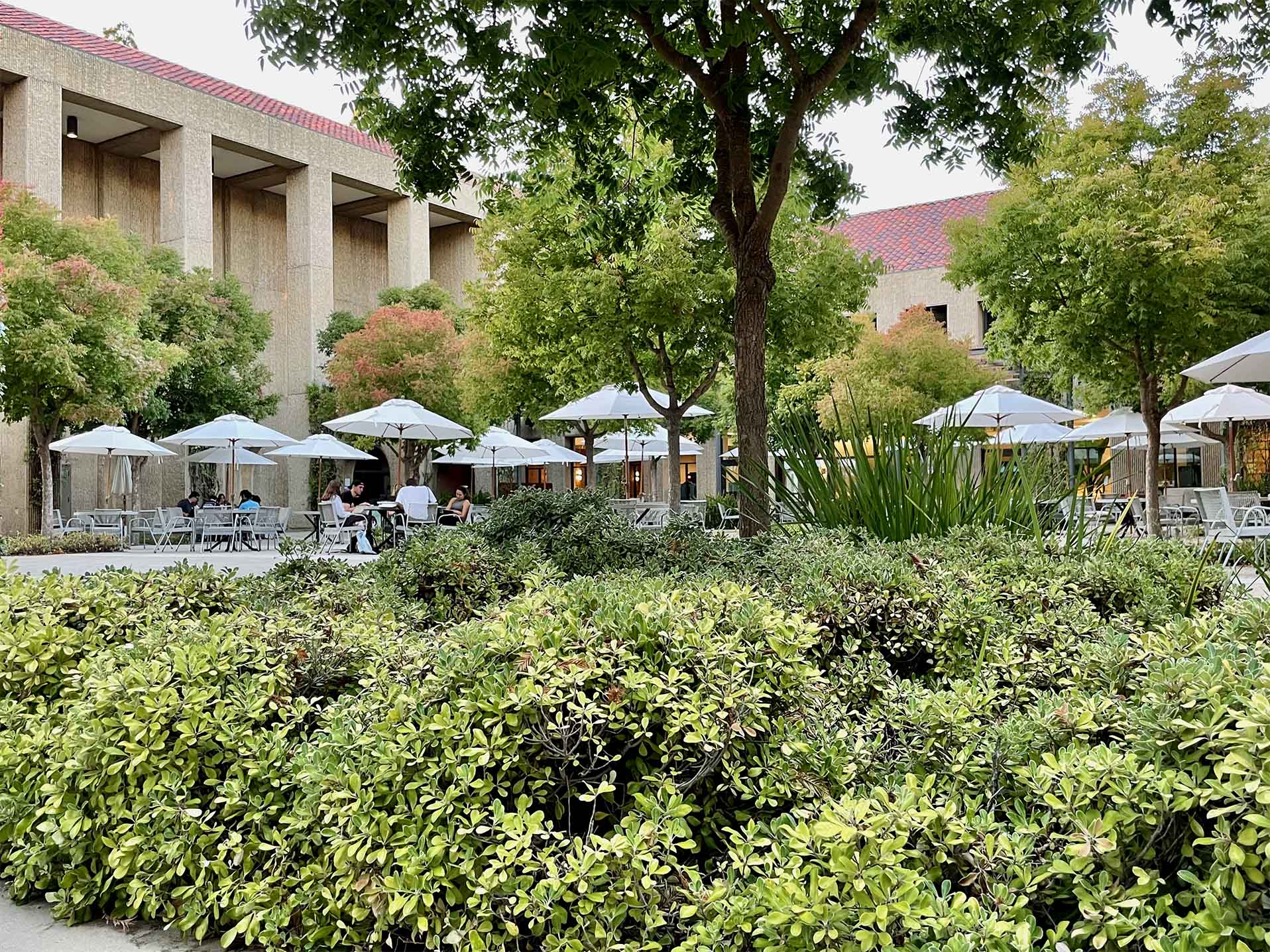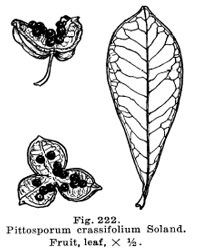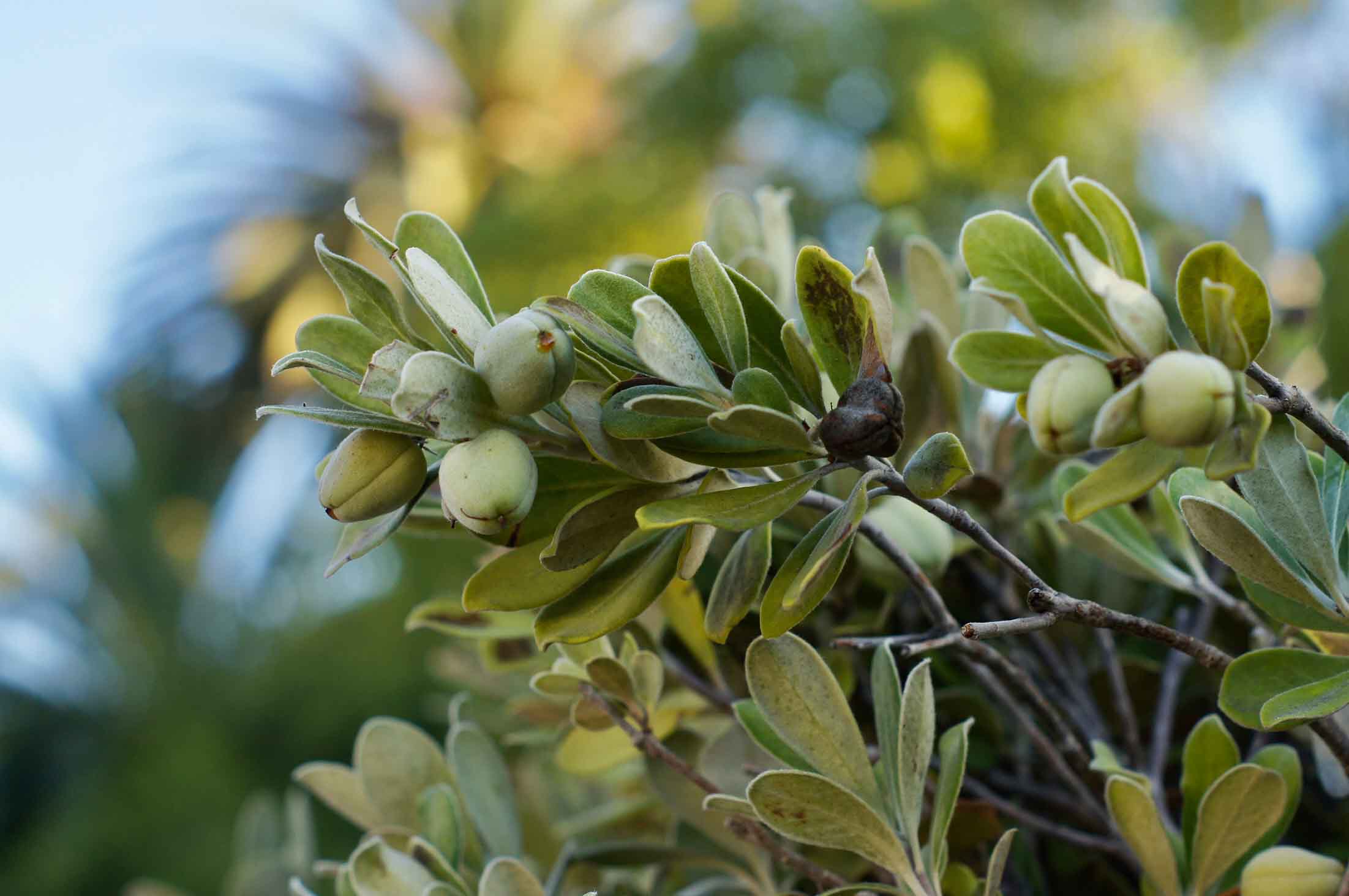Pittosporum crassifolium
 karo
karo

A shrub or small tree with silvery gray appearance due to pale felted undersurfaces on the 2- to 4-inch leaves. Small deep magenta flowers occur in spring. It is not clear why important New Zealand trees that grow in San Francisco and Santa Cruz are poorly represented at Stanford; for example kauri (Agathis australis), kowhai (Sophora tetraptera), and rimu (Dacridium cupressinum).
A trimmed hedge of karo separates Branner Hall’s front garden from the parking lot to the west. See two beds of the low-growing ‘Nana’ variety between the Law School and the William H. Neukom Building.
Look for karo in other campus locations as a small tree, trimmed hedge, and ground cover.

Name derivation: Pittosporum – Greek pitta (pitch) and spora (seed), referring to the sticky seed coating; crassifolium – thick-leaved.
About this Entry: The main text of this entry is from the book Trees of Stanford and Environs, by Ronald Bracewell, published 2005. Law School location added, location near Alvarado Row removed, light edits; all locations up to date (SP, Sep 2022).




